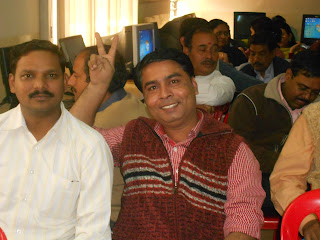Friday, 21 December 2012
Thursday, 20 December 2012
Class XI IP : Assignments(DBMS CONCEPTS & INTRODUCTION TO MYSQL )
DBMS CONCEPTS
TYPE
A : VERY SHORT ANSWER QUESTIONS
1. What
is data redundancy? What are the problems associated with it?
2. How
do data base management systems overcome the problems associated with data
redundancy?
3. How
do database management systems ensure data security and privacy?
4. What
is data model? Name various data model?
5.
Define the following terms:
|
(I) DBMS
(vi)
domain
|
|
(ii) View
(vii)
tuple
|
|
(iii) data security
(viii)
attribute
|
|
(iv) data integrity
(ix)
Degree
|
|
(v) Relation
(x)
cardinality
|
|
6. What are views? How are they useful?
7. What do you mean by referential Integrity?
How it is enforced in DBMS?
8. What is Key? Define the following keys-
|
|
(I) Primary key
|
|
(ii) Candidate key
|
|
(iii) Alternate key
|
|
(IV) Foreign key.
|
|
TYPE B : SHORT ANSWER QUESTIONS
1. What is Database Management System?
Discuss its functions?
2. Why DBMS is mostly used in IT
applications. Discuss its advantages.
3. What is Data Abstraction? Draw a diagram
explaining various levels of data abstraction.
4. What is meant by "Data
independence"? Explain difference between Logical and Physical
data
independence.
5. What do you mean by data model? Discuss
various data model with their major
characteristics.
|
|
INTRODUCTION
TO MYSQL
TYPE
A : VERY SHORT ANSWER QUESTIONS
1. What is MySQL? By which company was MySQL
developed?
2. Who is chief developer of MySQL? What is
name of dolphin logo of MySQL?
3. What LAMP stands for? Write the use of its
element applications.
4. What types of commands are used in the
following categories?
|
|
1. DDL
3.
TCL
|
|
2. DML
4.
System control commands
|
|
5. What do you mean by Data dictionary? What
it consist of?
TYPE
B : SHORT ANSWER QUESTIONS
1. What is MySQL? Describe its features?
2. What is the use of SQL and MySQL?
3. Differentiate between DDL and DML
commands?
4. What do you understand by client server
architecture of MySQL?
5. What is SQL? Discuss the different
categories of commands of SQL?
|
Friday, 23 November 2012
Syllabus: Informatics Practices
KENDRIYA VIDYALAYA SANGATHAN
SPLITUP
SYLLABUS
FOR
INFORMATICS
PRACTICE CLASS XII
|
Month
|
Content
|
Theory
Periods
|
Practical
Periods
|
|
April
|
UNIT 1: NETWORKING AND OPEN STANDARDS
Computer
Networking: Networking - a brief overview, Identifying computers and users
over a
network
(Domain Name, MAC 'Media Access Control' and IP address), domain name
resolution,
Network
Topologies, Types of network - LAN,
MAN, WAN, PAN; Wired Technologies - Co-
Axial,
Ethernet Cable, Optical Fiber; Wireless Technologies - BlueTooth, Infrared,
Microwave, Radio
Link,
Satellite Link; Network Devices - Hub, Switch, Repeater, Gateway - and their
functions;
Network
security - denial of service, intrusion problems, snooping;
Open
Source Concepts:
Open
Source Software (OSI norms), common FOSS examples (Gnu/Linux, Firefox,
OpenOffice),
common
open standards (open document format, Ogg Vorbis)
Indian
Language Computing: character encoding, UNICODE and Indian Language, different types of
fonts
(open type vs true type, static vs dynamic), Entering Indian LanguageText -
phonetic and keymap
based.
UNIT 2: PROGRAMMING
Review
of class XI (Suggested Topics)
Programming
Fundamental, Variables, Control Structures, Class, Methods. (Single Class
only)
|
23
|
8
|
|
Month
|
Content
|
Theory
Periods
|
Practical
Periods
|
|
June
|
Basic GUI
components – jFrame, jPanel, jButton, jTextField, jLabel, jRadioButton,
jCheckBox, jComboBox, jListBox,
Events:
ActionEvent, FocusEvent, KeyEvent
Methods
associated with Swing Components.
Note:
Sample Form based problems can be given to the students to solve, as was done
in earlier IP syllabus
|
9
|
2
|
|
July
|
UNIT 2:
PROGRAMMING FUNDAMENTALS
Access
specifier for classes, Members and methods, Concept of package
Inheritance:
need and implementation, Method Overloading and Overriding, Abstract Class
and
Interfaces,
use of interfaces
Commonly
used libraries: String class and methods: toString(), concat(), length(),
toLowerCase(),
toUpperCase(),
trim(), substring()
Math
object: pow(), round()
Simple
GUI Objects: Dialog
Accessing
MySQL database using ODBC to connect with database.
|
26
|
8
|
|
Aug
|
Web
application development: URL, Web Server, Communicating with the web server,
concept of
Client
and Server Side.
HTML
based web pages covering basic tags - HTML, TITLE, BODY, H1..H6, Paragraph
(P), Line
Break
(BR), Section Separator (HR), FONT, TABLE, LIST (UL, OL), FORM;
Creating
and accessing static pages using HTML and introduction to XML
UNIT 3: RELATIONAL
DATABASE MANAGEMENT SYSTEM
RDBMS Concepts
and Review of Class XI
|
25
|
8
|
|
Sep
|
Concept
of Database Transaction, Committing and revoking a Transaction using COMMIT
and
REVOKE,
Grouping
Records: GROUP BY, Group functions - MAX(), MIN(), AVG(), SUM(), COUNT();
using
COUNT(*), DISTINCT clause with COUNT, Group Functions and Null Values,
Displaying
Data From Multiple Tables: Equi-Join and Cartesian Products; concept of
Foreign Key;
Creating
a Table with PRIMARY KEY and NOT NULL constraints, adding a Constraint,
enabling
Constraints,
Viewing Constraints, Viewing the ColumnsAssociated with Constraints;
ALTER
TABLE for deleting a column,ALTER TABLE for modifying data types of a column
DROP
Table for deleting a table;
|
25
|
8
|
|
Oct
and Nov (till 15th Nov )
|
UNIT 4: IT APPLICATIONS
Revisiting
the features of e-Governance, e-Business and e-Learning
Front-end
Interface - Introduction; content and features; identifying and using
appropriate component
(Text
Box, Radio Button, CheckBox, List) for data entry, validation and display;
Back-end
Database - Introduction and its purpose; exploring the requirement of tables
and its essential
attributes;
Front-End
and Database Connectivity - Introduction, requirement and benefits
Project:
Java Swing and MySQL Based application development. Menu based Multi-frame
application may be developed in the fields of e-business, e-learning or
e-governance.
|
25
|
8
|
|
Dec
Jan
|
Revision, Pre-Board, Project Submission
|
35
|
|
Subscribe to:
Posts (Atom)




